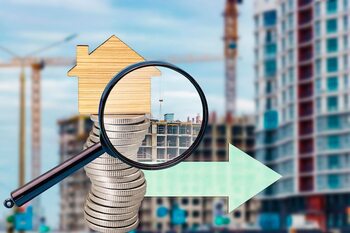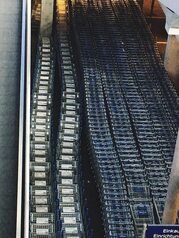The relevance of public transport in real estate appreciation

The relevance of public transportation in real estate appreciation is a crucial topic that connects urban and rural development. In a country like Costa Rica, where mobility is essential, well-connected areas tend to experience a significant increase in their real estate value. Analyzing how public transportation impacts appreciation in both urban and rural areas is not only fascinating but also vital for investors and buyers looking to maximize their investment. Let’s explore together how this relationship can transform your perspective on the real estate market.
The connection between public transport and urban development.
The connection between public transportation and urban development is essential to understanding how the dynamics of real estate markets are shaped. In areas where access to transportation services is efficient and accessible, an increase in population density and a revitalization of public spaces are observed. This not only benefits communities by facilitating the movement of people but also creates a favorable environment for commercial and residential development. Investments in transportation infrastructure are often accompanied by improvements in other essential services, such as education and health, which further enhances the appeal of these areas.
Moreover, urban planning that adequately integrates public transportation helps create more sustainable and resilient cities. Well-connected areas reduce dependence on cars, which decreases traffic congestion and improves air quality. This approach not only has environmental benefits but also enhances real estate value by attracting buyers interested in healthier and more convenient lifestyles. Thus, when considering investing in real estate, it is crucial to assess the available public transportation infrastructure; this can be a key indicator of the potential increase in a property's value.
2. How access to transportation increases land value in rural areas
Access to public transportation in rural areas is a determining factor for increasing real estate value. Often, these areas have been perceived as less attractive to investors due to their remote location and limited services. However, when efficient transportation systems are implemented, a significant transformation occurs. Connectivity improves access to labor and educational markets, resulting in higher demand for housing. Families seek to settle in places where they can enjoy rural tranquility without giving up urban opportunities, thereby increasing the value of local properties.
Furthermore, the development of transport infrastructure not only benefits current residents but also attracts new investments and businesses to the area. This generates a virtuous cycle: with more established companies, job options increase and overall quality of life improves, which in turn further raises real estate value. Investing in rural areas with good transport connections can be a smart strategy for those looking to maximize their return on investment. Therefore, considering transport access as a key indicator can provide buyers and investors with a competitive advantage in the real estate market.
3. Investment comparison: urban vs rural based on transportation
The comparison between investments in urban and rural areas based on transportation is essential for understanding how accessibility influences property value. In cities, where public transportation systems tend to be more developed and diversified, properties usually enjoy greater appreciation. Proximity to metro stations, buses, or trams not only facilitates the daily commute of residents but also attracts businesses and investors looking to establish themselves in areas with high connectivity. This creates a virtuous circle where real estate demand increases, thereby raising prices and promoting sustainable economic growth.
On the other hand, rural areas face unique challenges regarding public transportation. Although some localities are beginning to implement more effective mobility solutions, many still rely on private vehicles to access basic services and employment. This can limit the attractiveness of real estate investments in these regions. However, when rural transportation infrastructure is improved —such as regular bus routes or shared systems— a new opportunity arises to increase real estate value. Investing in these spaces can be beneficial not only for buyers seeking affordable properties but also for those interested in community and sustainable development that enhances local quality of life.
4. Success cases: Costa Rican cities with good public transportation
Public transportation in Costa Rica has proven to be a decisive factor in the valuation of properties in several cities. For example, San José, the capital of the country, has implemented a system of buses and trains that facilitates the daily movement of thousands of citizens. This level of connectivity not only improves the quality of life for residents by reducing travel times but also attracts new investors and developers. The growing demand for housing in areas close to stations and stops translates into a notable increase in real estate appreciation, creating a virtuous circle that benefits both property owners and local businesses.
Another emblematic case is the canton of Escazú, known for its modern infrastructure and proximity to important public transportation routes. Investment in housing projects near public transport routes has boosted local economic development and raised real estate prices in the area. Urban policies that promote greater interconnection between neighborhoods through efficient systems have made Escazú an attractive place to live and work. This synergy between mobility and real estate value highlights how access to public transportation can be a powerful lever to improve urban quality and maximize future investments.
5. The role of the government in improving transportation and its real estate impact
The role of the government in improving public transportation is fundamental for the real estate development of any country. Investments in transportation infrastructure, such as new bus lines, trains, or metro systems, not only facilitate the mobility of citizens but also increase accessibility to various areas. When the government prioritizes and funds effective public transportation projects, opportunities arise for adjacent areas to experience an increase in their value. This results in a positive cycle where better transportation services attract both residents and businesses, which in turn raises land value.
Moreover, government policies that promote the use of public transportation can contribute to more sustainable and balanced urban planning. Initiatives such as subsidies to improve fares or incentives to develop housing near transportation stations can attract more people to these areas. This approach not only helps reduce traffic congestion and pollution but also fosters an appealing urban environment for families and investors. In this regard, a proactive government can play a decisive role in creating an ecosystem where efficient transportation and real estate development mutually reinforce each other, thus benefiting both citizens and the real estate market in general.
6. Future infrastructure projects that will change the real estate landscape
Future infrastructure projects in the realm of public transportation are essential to redefining the real estate landscape. The construction of new subway lines, commuter trains, and express bus systems not only promotes more efficient mobility but also transforms the economic and demographic dynamics of the surrounding areas. When a new mode of transportation is established that connects previously isolated zones, a domino effect is created: the demand for housing in these areas increases, leading to a rise in property prices and a revitalization of local commerce. This phenomenon is especially evident in cities where public transportation expansion plans are aligned with sustainable urban strategies.
Furthermore, the implementation of projects that prioritize sustainable transportation can attract significant investments in urban development. Spaces designed to be accessible via bike lanes and strategically located bus stops encourage the creation of more integrated communities, where living close to work or educational centers becomes a more achievable reality. As these infrastructures progress, so does the perception of the area as a desirable place to live and invest. Thus, those who understand this interconnection between public transportation development and real estate appreciation will be better positioned to make informed decisions that maximize their return on investment.
7. The influence of the type of transportation (bus, train, bicycle) on the added value
The type of transportation available in an area can significantly influence its real estate appreciation. Areas with access to efficient public transportation, such as buses and trains, tend to be more attractive to buyers and investors. This is because ease of mobility not only saves time but also improves quality of life, resulting in an increase in the value of nearby properties. Urban developments that integrate train stations or bus stops tend to attract more attention and demand, thereby raising real estate market prices.
On the other hand, the use of bicycles as a means of transportation is gaining relevance in many cities. The implementation of safe and accessible bike lanes promotes a sustainable and healthy lifestyle, turning the surrounding areas into desirable options for those looking to buy a home. This phenomenon not only benefits the environment, but it can also result in an increase in the value of properties adjacent to these infrastructures. In summary, both conventional public transportation and sustainable alternatives play crucial roles in real estate valuation, reflecting how decisions about mobility can transform the urban and rural landscape.
8. Global trends: What can we learn from other nations?
Global trends in public transportation offer valuable lessons that can be applied to the Costa Rican reality. In cities like Amsterdam and Tokyo, for example, the focus on integrated transportation systems has proven to be a key driver for real estate appreciation. These cities have invested in networks of trains, trams, and buses that not only facilitate mobility but also encourage compact and sustainable urban development. By observing how these nations prioritize access to public transportation, Costa Rica could draw inspiration to develop policies that promote greater connectivity and, in turn, boost property values in strategic areas.
Additionally, countries like Germany have implemented successful urban planning strategies that integrate green spaces and pedestrian areas with access to public transport. These initiatives not only improve the quality of life for residents but also increase real estate demand in the surrounding areas. Creating attractive environments where transport is efficient can be a necessary shift for those Costa Rican regions seeking revitalization. Learning from these international experiences allows developers and investors to anticipate trends and adapt their projects to the current needs of the local real estate market, thereby maximizing their return on investment.
9. Tips for investors on strategic location related to transportation
When considering the strategic location related to transportation, investors should pay special attention to areas with access to bus stations, trains, or metro systems. Proximity to these points not only facilitates the mobility of residents but also attracts potential tenants and buyers who value the convenience of public transportation. A well-connected neighborhood can experience increasing demand, which translates into a gradual rise in property prices. Therefore, researching the routes and frequencies of public transportation in a specific area is essential for assessing its appreciation potential.
It is also advisable to consider the future development of transportation infrastructure in the region. Planned investments in new subway lines or expansions in bus service may mean an increase in real estate value in the long term. Smart investors should be aware of urban development projects and government plans that could change the landscape of public transportation. By identifying areas where significant improvements in mobility are projected, more informed and profitable investments can be made, thus ensuring a positive return on their capital.



